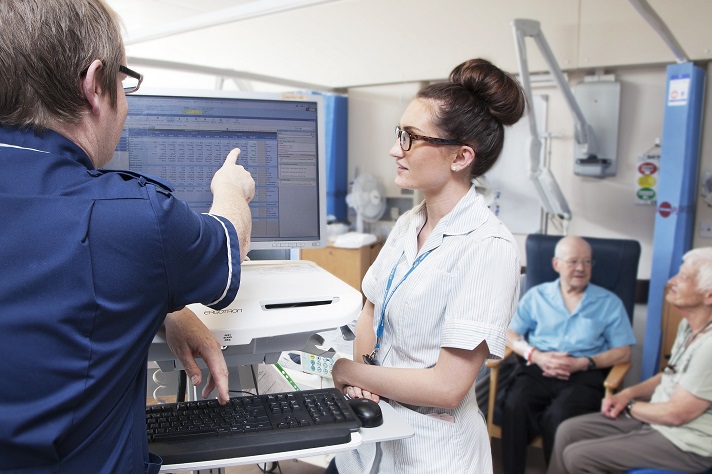Electronic Health Records (EHR, EMR)
SPONSORED
With better ways to build and maintain strong patient relationships, providers can actually reduce costs while improving the quality of care. Ideally, patient engagement solutions enable caregivers to create a more integrated, continuous feedback loop, allowing them to stay connected with patients at home as well as within their facility's four walls.
With its three-pillar approach to modernization, the U.S. Department of Veterans Affairs is transforming its technology systems to create foundational change, says its chief modernization officer.
On the frontlines of the coronavirus pandemic, UW has ramped up telemedicine capabilities and made immediate changes to its EHR to support COVID-19 care.
In a region of 10 million residents, the nonprofit Los Angeles Network for Enhanced Services is helping achieve care coordination, closing care gaps when providers are able to access data at the point of care, using a central interoperable platform.
The ability to gain access to the data through reusable APIs significantly improves developer productivity, enabling CIOs to achieve more with the same resources.
Dr Afzal Chaudhry, director of digital and CCIO at Cambridge University Hospitals NHS Foundation Trust, writes about the organisation's eHospital programme.
Forward-thinking healthcare organizations striving to prosper in an outcomes-based care environment may already be considering value sets. The problem is that not only do current value set offerings tend to be overwhelming for institutions to create and maintain; but if done improperly, value sets can actually negatively impact care management and quality measures, ultimately harming both outcomes and revenue.
We’ll discuss best practices that can help providers modernize their environments and personalize care by leveraging technology and the data it produces to improve clinical effectiveness, cut costs and provide the highest quality of care.
SPONSORED
The Identity Imperative for Healthcare Providers and Payers: Overcoming Barriers in Digital Transf…
Amidst a paradigm shift, the healthcare industry appears to be solving one problem while creating another. On the one hand, healthcare organizations are turning to technology to help them curb costs while adopting new care delivery models focused on improving patient outcomes and access to services. Yet these digital transformations present their own set of challenges, given the dual needs of ensuring both reliable security and a seamless experience for end-users.
Clinical documentation improvement is important to physicians and hospitals to capture how sick patients truly are by documenting clear and specific diagnoses that impact the encounter, to document it while the patient is still inhouse, and for the physician to be able to address it while they are in their workflow. This will show a true reflection of the time and resources used to treat the patient and thus be accurately reflected on discharge.










